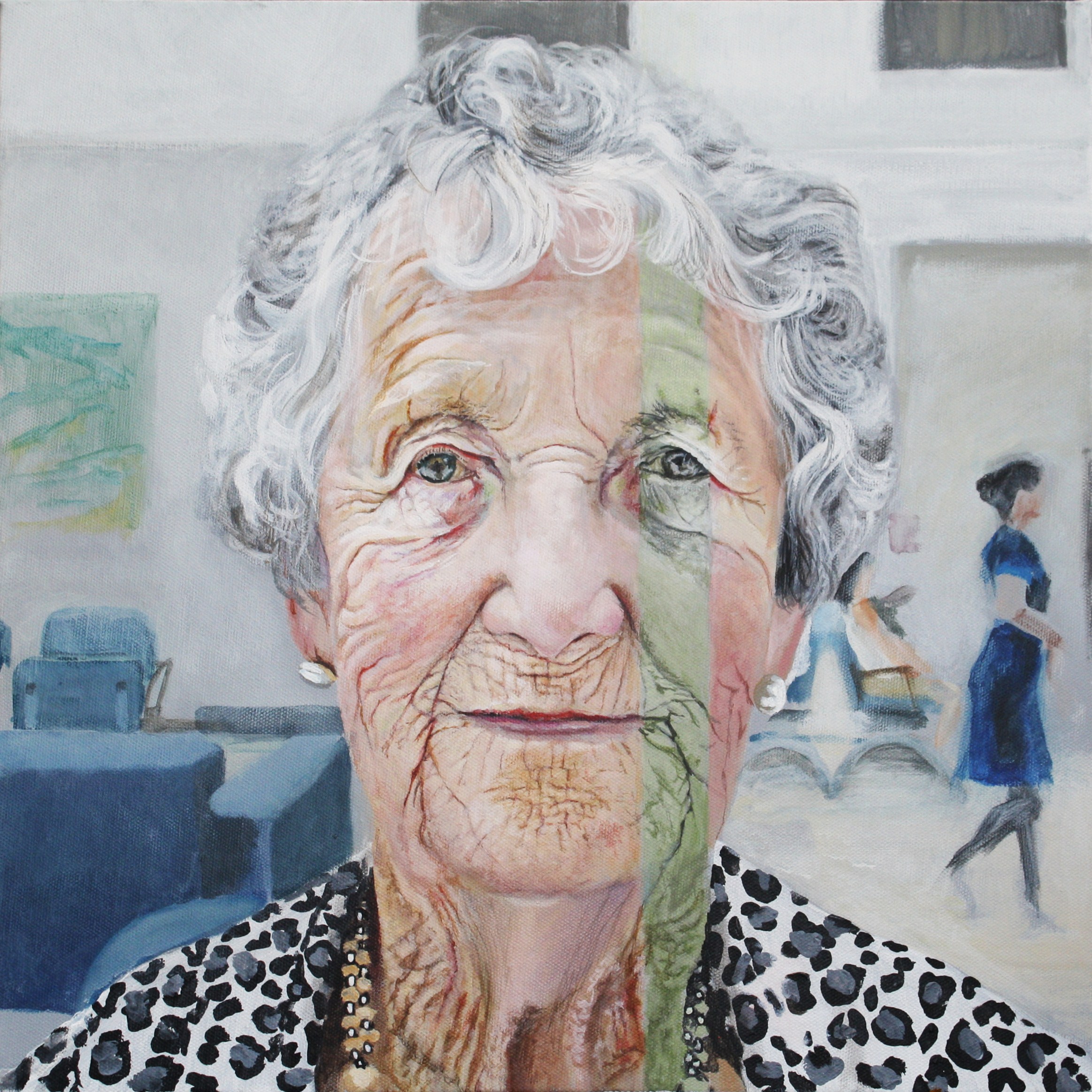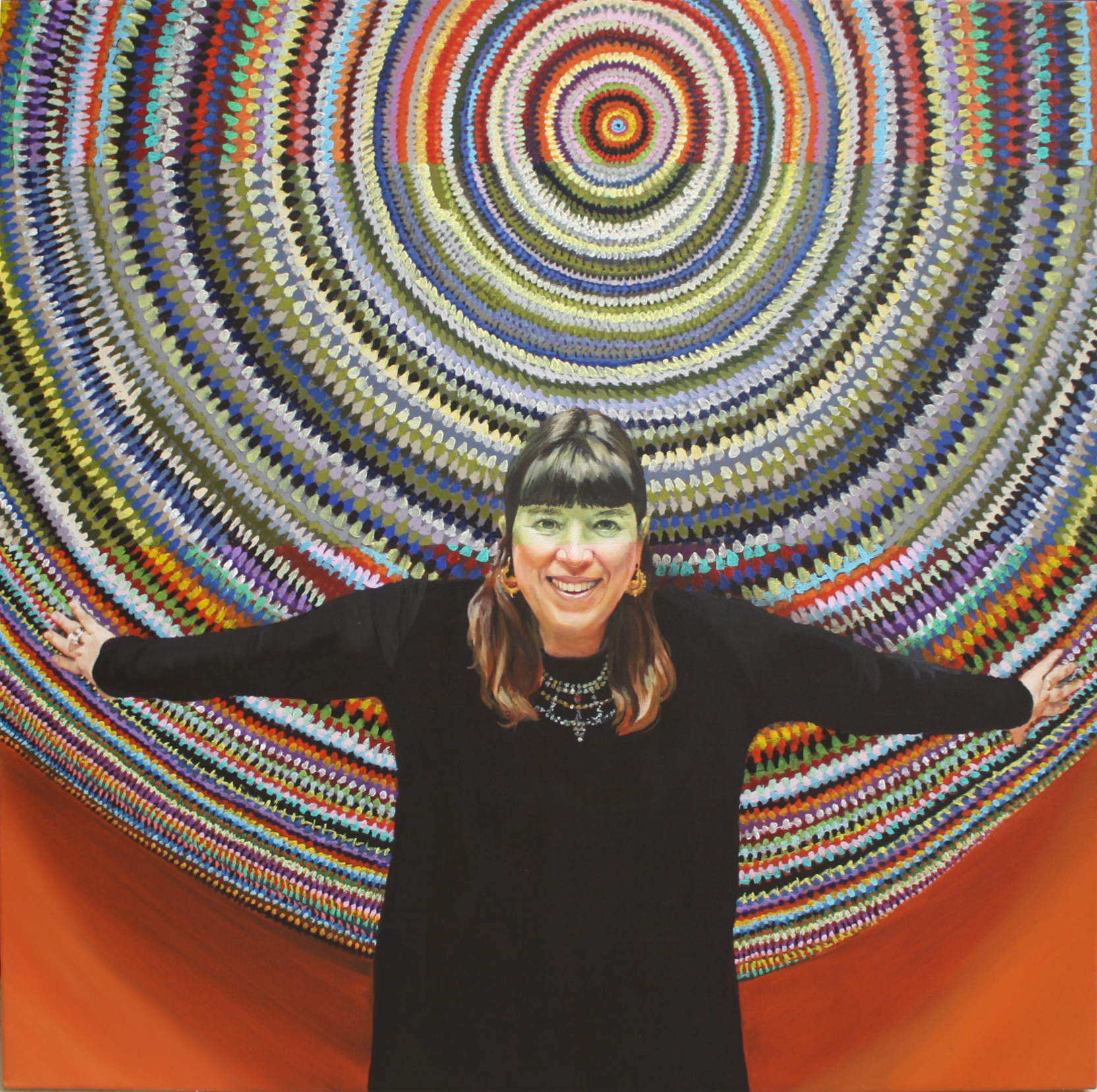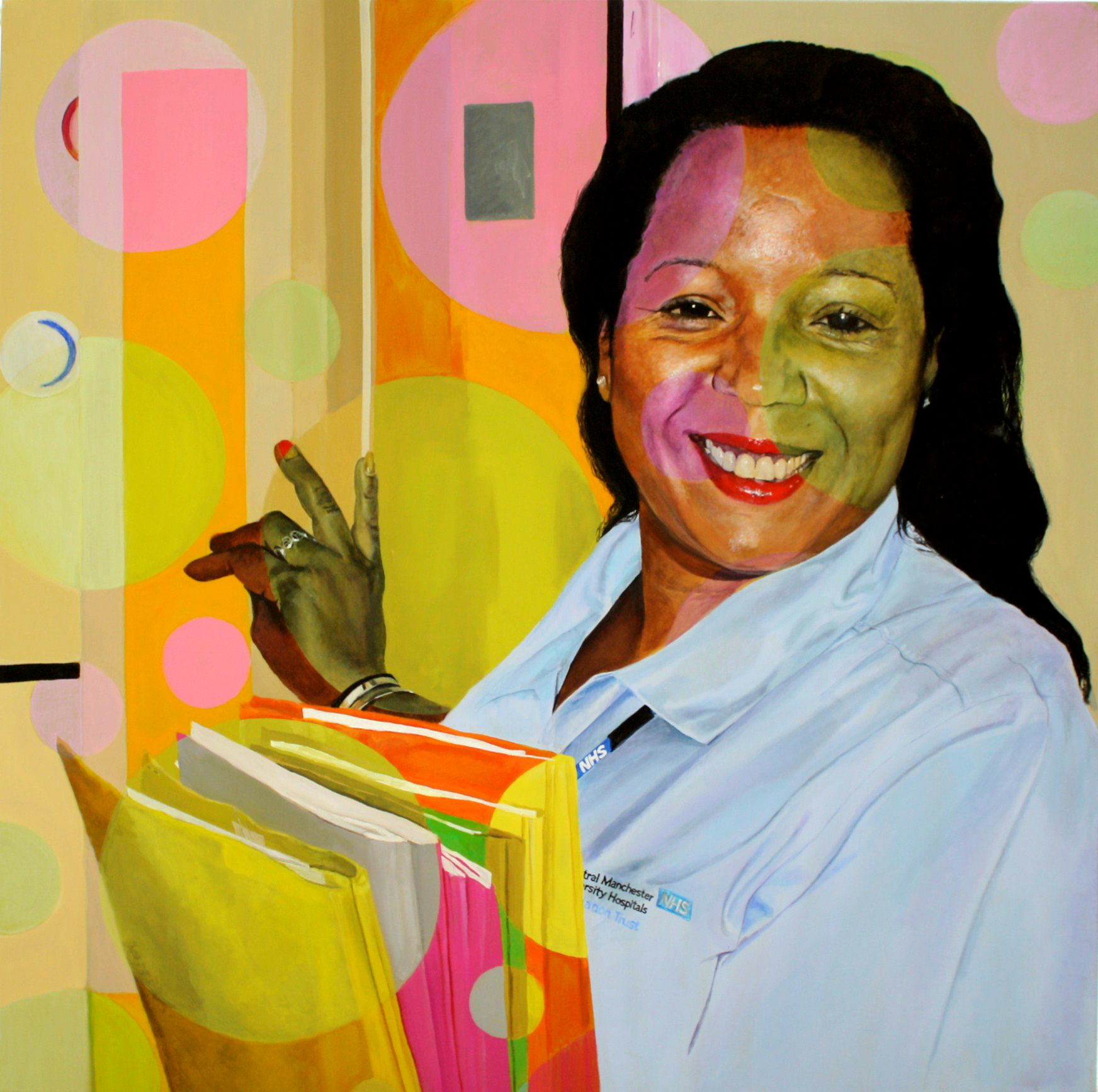
‘Stephen with a Magnifier’ Acrylic on canvas, 2014
Stephen Golding is a well known member of staff at MREH. He works as a dispensing optician. He is painted with one of the many illuminated magnifiers that he can recommend for people with low vision.
The standard vision colour range is shown within the magnifier. Outside is how someone with deuteranopea sees. Dalton who first identified colour-blindness, was a deuteranope. This was confirmed when DNA from his eyes, which he had left to science after his death, was tested 150 years later in 1995.

‘The Lady with The Pearl Earrings’ Acrylic on canvas, 2014
This portrait is of one of the patients who enjoyed watching Lucy paint while she was waiting for an appointment.
Look200 was an ‘Arts for Heath’ project which offered patients and staff an opportunity to relax and perhaps forget about their worries while they followed the development of the work.
Lucy had great fun discussing the science behind the project with patients and staff. She learnt a lot from them and passed those ideas on. Learning something new is a great way to boost your feeling of well-being – the aim of the project!

‘Joana and the Big Booby’ Acrylic on canvas, 2014
A portrait of the artist Joana Vasconcelos with her brightly coloured crocheted sculpture, ‘Big Booby’.
Lucy chose to paint Vasconcelos, who was exhibiting at Manchester Art Gallery as work on Look200 began, because her multicoloured artworks were perfect for helping to show how a wide range of colours are perceived differently by people with a colour vision deficiency (colour-blindness). This image has an area painted as it would be seen by someone with Deuteranopia, which is sometimes called green-blindness.

‘Marie with Notes’ Acrylic on canvas, 2014
Marie works in the hospital’s Clinic H. She is lovely and friendly and well known by many patients and staff. Lucy asked to paint her to try and capture that positivity.
The circles in the painting make reference to Ishihara tests that are used to check for colour-blindness. The greenish circles describe the colour vision of people with Deuteranopea or Protanopea, which together make up the disorders that referred to as red/green colour-blindness. Also depicted is the much rarer form called Tritanopea (the pinkish areas).

‘Gentleman with a Gold Tooth’ Acrylic on canvas, 2014
This portrait is of one of the patients who Lucy was fortunate enough to meet on a lovely sunny day when he had just been discharged after successful treatment. He was very relieved and happy and Lucy has tried to capture that feeling.
Look200 celebrates some of the research into vision that has happened in Manchester. The colour difference in areas of this portrait relate to John Dalton’s contribution – he was the first person to identify colour-blindness as a disorder. He lived and worked in the city when the hospital was opening in 1814.

‘Maria with a Teacup’ Acrylic on canvas, 2014
This is a portrait of Maria Balshaw, director of both Manchester
Art Gallery and Whitworth Art Gallery, the hospital’s close neighbour. It was painted over ‘Culture Shots Week’ when the city’s museums and galleries come to the hospitals. During Maria’s directorship strong links have been forged between Central Manchester NHS Trust and Manchester’s cultural institutions. Arts for Health programmes are delivered directly to patients and have been found to be a great success. Maria is depicted with her favourite painting from the Manchester Art Gallery’s collection, ‘Queer’ by Derek Jarman.

‘Dalton’s Poppies’ Acrylic on canvas, 2014
The poppy in this painting acts as a pie chart with each section, denoted as red, green and blue in the border, showing the prevalence in the UK of each of the three most common forms of colour blindness.
The poppy in the painting makes reference to the fact that 2014 is not just the bicentenary of Manchester Royal Eye Hospital but also the centenary year of the start of World War 1. The hospital played a significant part in treating soldiers returning from the front with eye injuries sustained in the fighting and during gas attacks.
